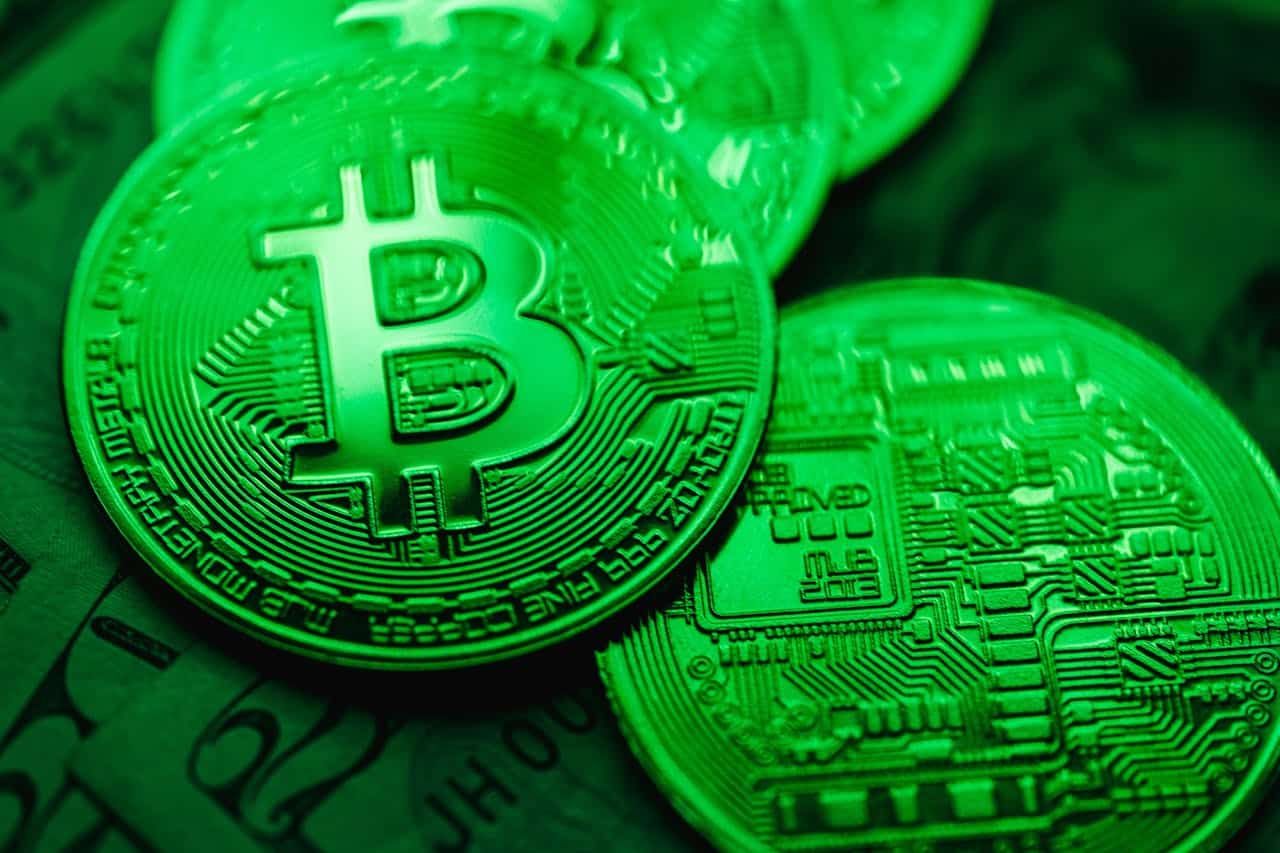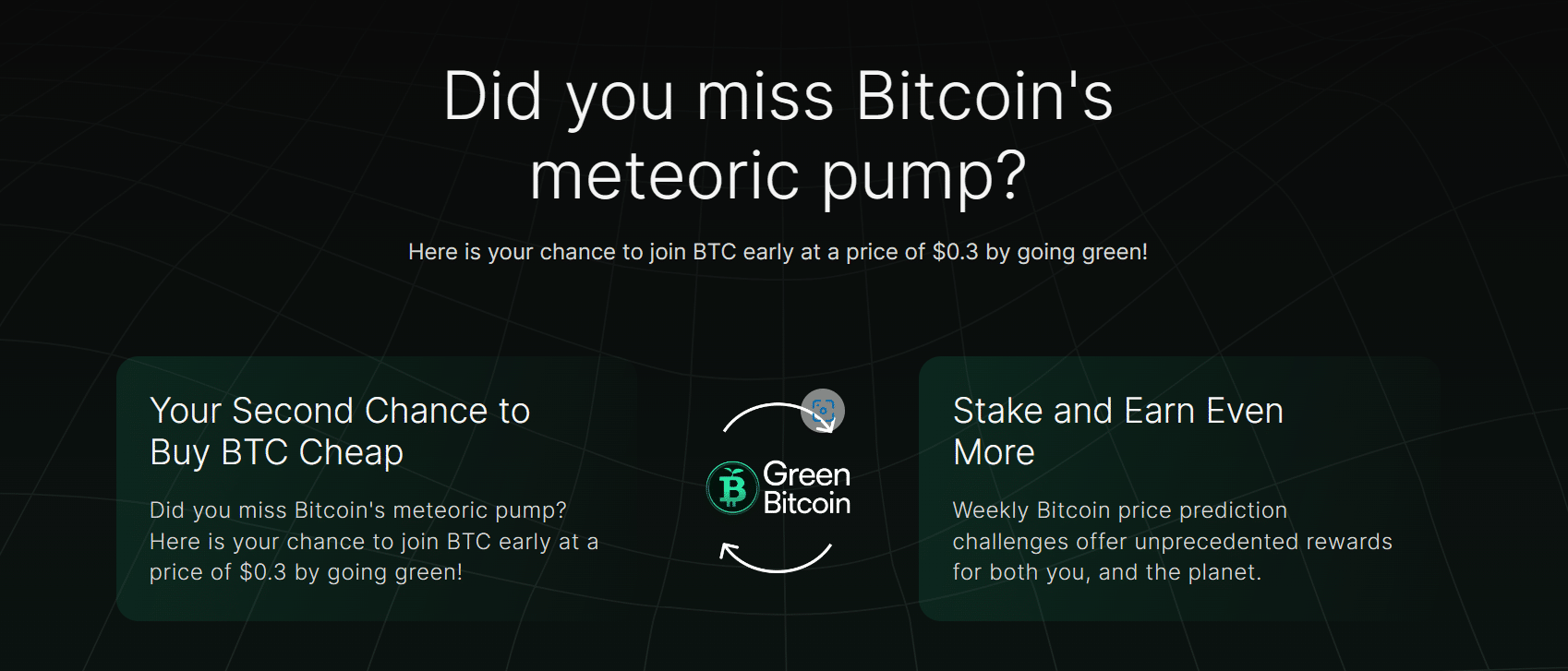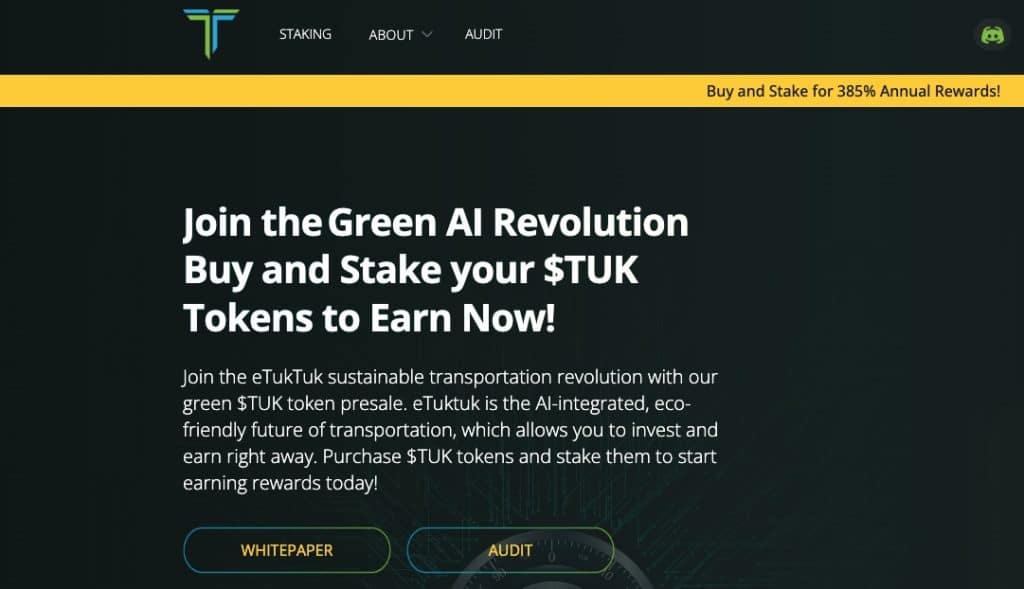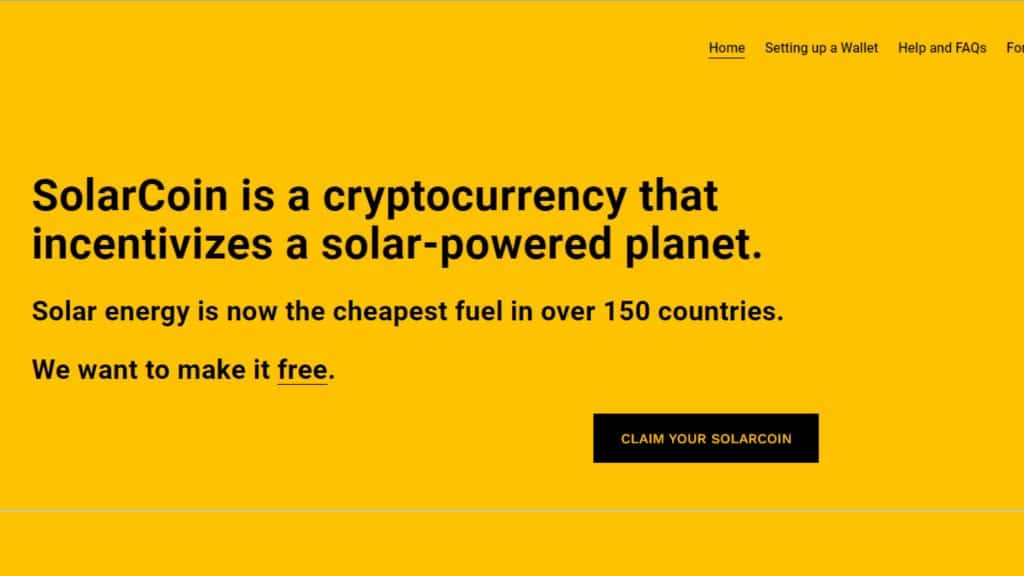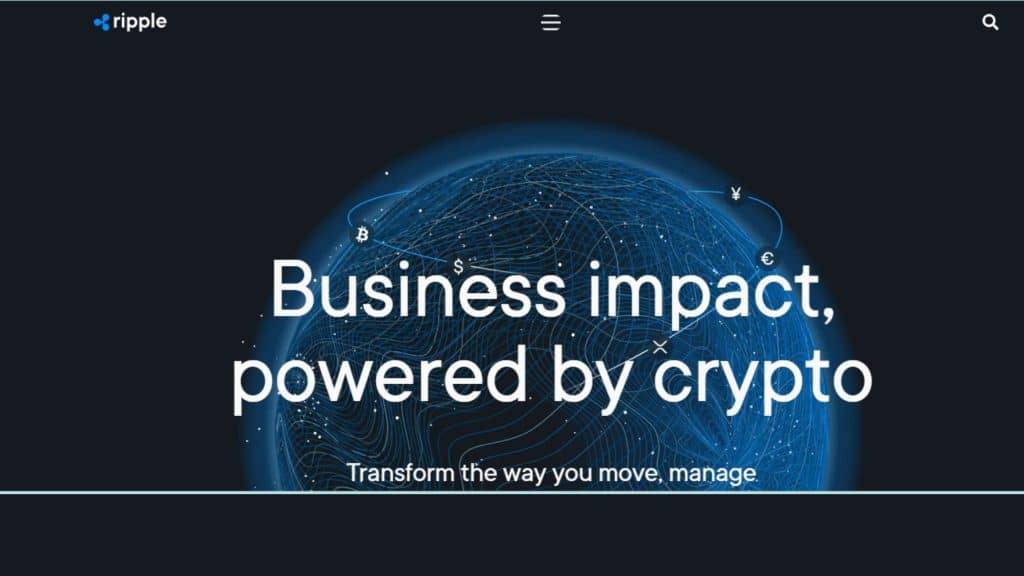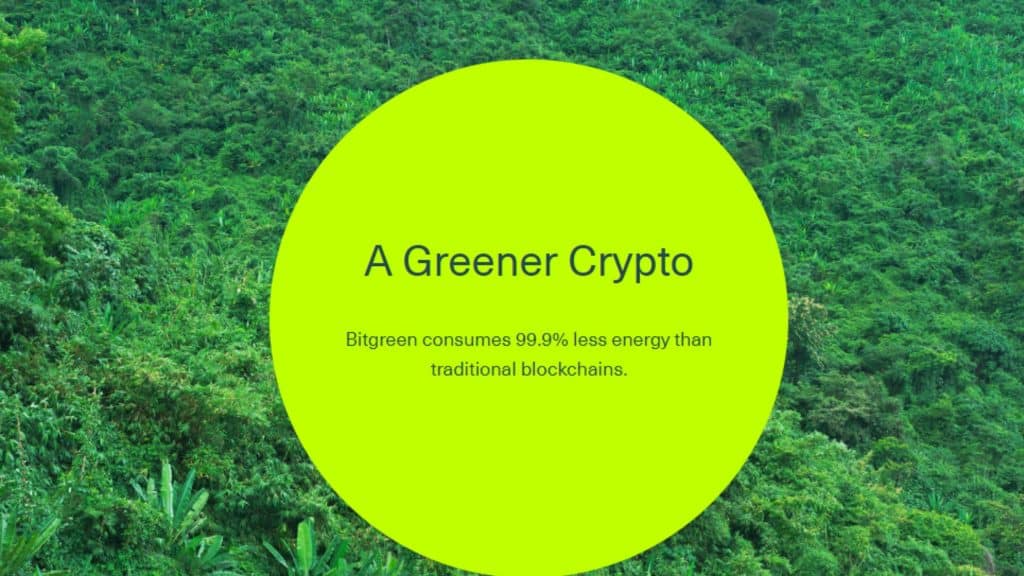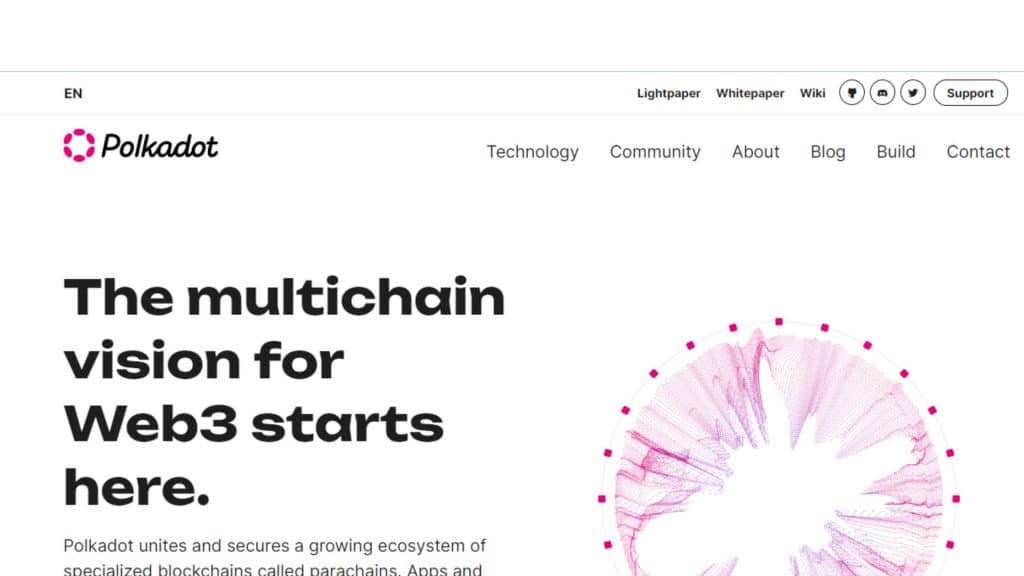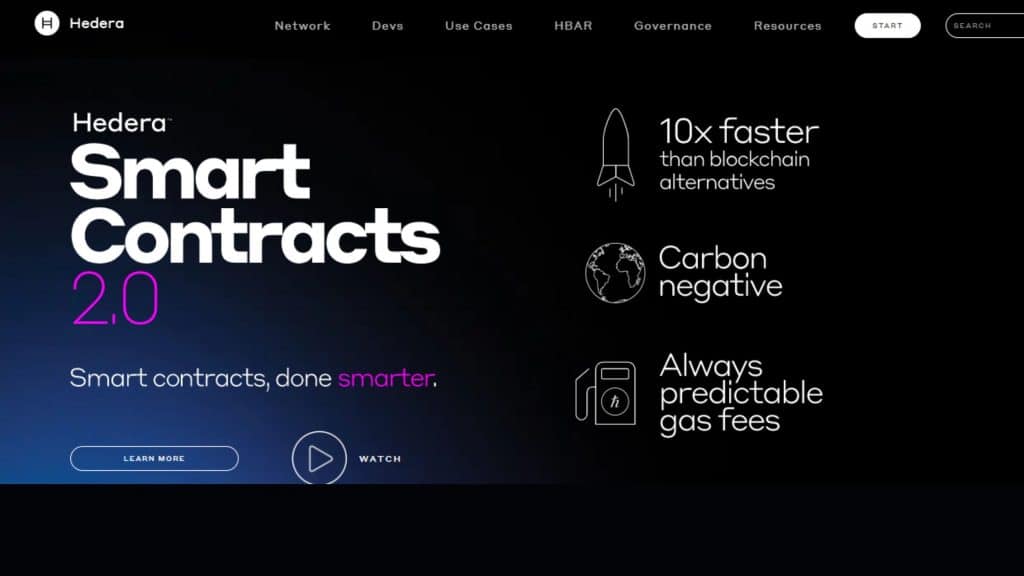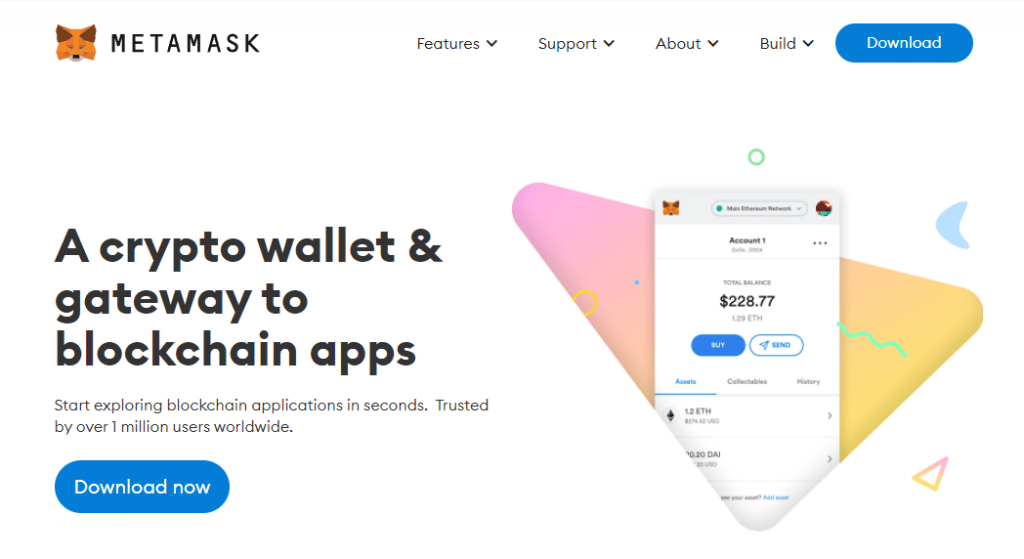Best Green Crypto To Buy in 2025: Eco-Friendly Cryptocurrencies
As the world moves towards sustainability, eco-friendly crypto are becoming more and more popular. That’s why it makes sense to invest in green crypto coins cryptocurrencies that use environmentally friendly practices to create their blockchain systems. In this guide, we’ll explain what green crypto is, provide a list of the best energy efficient crypto to invest in, and give you a closer look at each one of them.
-
-
- Earn passive rewards through gamified staking
- The sustainable version of Bitcoin built on Ethereum
- Invest at a discounted price during the presale event to maximize returns
Project LaunchedFebruary 2024Purchase Methods- ETH
- USDT
- Invest in the newest sustainable cryptocurrency
- $TUK tokens can be staked for passive rewards
- The eTukTuk project helps to develop sustainable initiatives for a greener future
Project LaunchedJanuary 2024Purchase Methods- BNB
- USDT
- Debit
10 Best Green Crypto To Buy in 2025
- Green Bitcoin (GBTC) – The latest Bitcoin derivative that offers a gamified staking models through which investors can earn passive rewards. Buy GBTC early in the presale to take advantage of price increases and maximize returns before the Bitcoin halving.
- eTukTuk (TUK) – drivers can diversify their income and benefit from rewards, while users benefit from an environmentally friendly and cost-effective transportation option. Blockchain technology ensures transparency and trust in the system.
- Solarcoin (SLR): SolarCoin rewards users for generating solar energy. It is possible to earn 1 SLR for every 1 megawatt hour of energy generated. The project aims to encourage the generation of sustainable energy. SLR offers investors the unique opportunity to participate in the growth of the green crypto market while supporting environmentally friendly causes at the same time.
- Ripple (XRP): Ripple is an ‘inherently green’ cryptocurrency that proposes an environmentally friendly alternative to Bitcoin. All XRP tokens are already in circulation, which means there is no need for harmful mining. What’s more, XRP uses a PoS mechanism instead of a PoW, which means that transactions can be verified in a more sustainable way.
- Bitgreen (BITG): BitGreen is an environmentally friendly blockchain network and innovation platform. The platform builds sustainable solutions and focuses on decarbonization. The project aims to invest $1 trillion in environmental initiatives over the next 10 years. Bitgreen makes it simple to fund, originate, and buy high-quality,transparent carbon credits that protect the environment.
- Polkadot (DOT): Polkadot is an energy-efficient blockchain network that consumes only a fraction of the power that is used by other networks. The network uses a nominated proof-of-stake model that uses only 6.6 US household’s worth of energy per year. DOT, the platform’s native currency, powers the blockchain’s essential functions.
- Cardano (ADA): Cardano was the first blockchain to evolve from research and has been built with sustainability in mind. Cardano is eco-friendly crypto because it uses proof-of-stake instead of proof-of-work, so it does not contribute to greenhouse gases. At the moment, around 35 billion ADA tokens are in circulation.
- Near Protocol (NEAR): The NEAR blockchain is a climate-neutral network that uses the PoS consensus mechanism. The project is dedicated to sustaining climate neutrality by not contributing to climate emissions. The native token on the NEAR Protocol is called NEAR.
- Hedera Hashgraph (HBAR): Hedera Hashgraph is a carbon-negative crypto project that is committed to sustainability. The platform uses an energy-efficient hashgraph algorithm to facilitate transactions and a PoS blockchain mechanism. Hedera is built for quick, three- to five-second transactions with low latency.
The price or value of cryptocurrencies can rapidly increase or decrease at any time. You must be satisfied that this crypto offering is suitable for you in light of your financial circumstances and attitude towards risk.
What Are Green Cryptocurrencies?
Green cryptocurrencies, or as they are called, eco-friendly crypto, use less resources and energy compared to traditional cryptocurrencies. They are developed on the principle of being less harmful to the environment and even encourage participation in solving the environmental problems facing humanity.
Eco crypto stands out from the rest of the traditional cryptocurrencies by using renewable energy sources such as solar, wind and hydroelectric power in its mining activities. Another aspect that cannot be overlooked is that eco crypto coins charge lower transaction fees. Therefore, they require less additional energy to transact, contributing to a lower environmental impact.
Investors who are concerned about the environment tend to avoid cryptocurrencies such as Ethereum and Bitcoin due to concerns about their less favourable environmental impact. However, the emergence of green crypto represents a significant investment and development opportunity.
Eco crypto is becoming increasingly attractive in both the short and long term. This interest is supported by the frequent use of cutting-edge technologies, which means that the demand for eco crypto coins could see significant growth in the coming years.
How Are Traditional Cryptocurrencies Harmful To The Environment?
Traditional cryptocurrencies, such as Bitcoin, are often criticized for their environmental impact due to the significant amount of energy required to mine and maintain the blockchain. According to the PSCI, the annual electricity consumption of the Bitcoin network exceeds the total amount of energy needed to power all the kettles in the UK for 19 years.
A key reason is the use of the proof-of-work (PoW) consensus mechanism, where miners compete to solve complex mathematical problems to validate transactions, a process that requires significant computing power and energy consumption.
The energy consumption of traditional cryptocurrency mining operations is very high, requiring vast amounts of electricity. They also increase the carbon footprint resulting from the electricity used in the mining process.
Carbon emissions associated with cryptocurrency mining contribute to climate change, as a significant portion of the world’s electricity still comes from non-renewable sources such as coal and natural gas.
Why Eco Cryptos Are Important
Over the last few years, the has been an emergence of new, eco-friendly crypto projects that aim to offer the same decentralized benefits as traditional crypto, without harming the environment. Introducing sustainable technology could help to accelerate the mass adoption of cryptocurrencies, which is vital to the future of the crypto space.
Here is a look at why green crypto is so important in 2025.
Green cryptos use less energy
With the mining of cryptocurrencies, people started to do it in an uncontrolled way with their own hardware, and then with more processors and computers, graphics cards – the main mining elements. This led to high power consumption and significant uncontrolled expenditure, including e-waste worldwide.
The negative environmental impact caused by energy consumption, carbon emissions and e-waste generation during the cryptocurrency mining process is a major concern. Given that approximately 81% of the world’s energy is based on fossil fuels, the growing interest in cryptocurrency mining could lead to major energy consumption issues in the future.
While most of the most popular cryptocurrencies in the crypto space, such as Bitcoin, were developed through mining, the eco crypto coins tend to rethink this in order to reduce their disproportionate energy consumption.
Reduced CO2 emissions
Eco crypto coins actively participate in reducing CO2 emissions, which are crucial to slowing climate change. Although they still emit energy, these projects ensure their electricity requirements are much lower than those of Bitcoin, for example. According to a UN study, to offset the CO2 emissions from Bitcoin mining in 2021-2022, 3.9 billion trees would need to be planted, an area the size of the Netherlands, Switzerland or Denmark, or 7% of the Amazon rainforest.
Fight climate change and deforestation
New eco crypto coins such as Cardano and Chimpzee and their foundations have been involved in fighting climate change and deforestation, while other projects choose to donate to charities such as the Red Cross. All of the above makes green crypto a better option to choose for long-term investments than Ethereum or Bitcoin, which are not nearly as sustainable.
Another main difference between traditional cryptocurrencies and green ones is that they provide an ESG-friendly investment opportunity, since more and more investors are looking for a conscious way to buy crypto.
Don’t invest unless you’re prepared to lose all the money you invest. This is a high-risk investment and you should not expect to be protected if something goes wrong.
Proof-of-Work vs. Proof-of-Stake
While previously created Proof-of-Work blockchains such as Bitcoin and Ethereum (ETH) consumed massive amounts of electricity, newer Proof-of-Stake networks are tens of thousands of times more energy efficient. Therefore, the majority of eco crypto coins dispute revolve around which consensus technique is employed to protect the network. But let’s dig deeper and see what the main features of both mechanisms are and what sets them apart.
Proof-of-Stake (PoS)- PoS reduces the demand for processing power significantly, making it a more energy-efficient and environmentally friendly option. Validator nodes in a PoS consensus are chosen to construct blocks depending on the number of coins they own and are prepared to “stake” or lock up as collateral. It’s similar to a digital lottery, where your odds improve as you accumulate more assets.
Proof-of-Work (PoW) – Works similar to a massive digital mine in which numerous crypto miners work ceaselessly to solve complex mathematical challenges, and the first person to solve it adds a block to the blockchain and earns cryptocurrency incentives. The Bitcoin mining process needs huge processing capacity, resulting in massive energy consumption and a large carbon impact on the atmosphere.
Disputes are still running around, so digital currency enthusiasts claim that PoW is a more secure technique of consensus and that PoS is undeniably more energy efficient. But according to the The BBC, when Ethereum switched from PoW to PoS during The Merge, network energy usage fell by 99.9%, and it now consumes less energy per year than PayPal.
Pros and Cons of Green Crypto
The cryptocurrency market’s expansion highlights its environmental impact, with eco-friendly projects potentially becoming leaders in the industry due to reduced electricity consumption. Below are the main pros and cons of investing in sustainable cryptocurrencies.
Pros:
- Improves the reputation of crypto industry – The transition to a PoS chain and the growing popularity of sustainable crypto projects are transforming the sector’s reputation and promoting sustainability.
- Reduces the Carbon Footprint – Green cryptocurrencies consume significantly less energy than older blockchains like Ethereum and Bitcoin.
- Prone to larger adoption worldwide – Because of their eco-friendly values, which can appeal to a broader audience, including environmentally aware investors and institutions, opening the path for broader adoption.
Cons:
- Lack of Regulatory Certainty – The crypto ecosystem is constantly changing, and regulatory views can shift.
- Unproven Technological Developments – Green cryptos may encounter technological barriers, faults, or vulnerabilities that must be addressed as time goes on.
- Market Volatility – Green cryptocurrencies, like traditional ones, are vulnerable to market volatility.
A Closer Look at The Best Environmentally Friendly Cryptocurrencies in 2025
Cryptocurrencies are all the rage these days, and for good reason. They offer the potential for big returns with the right strategy in place. Furthermore, cryptocurrencies have the potential to increase the sustainability of the financial industry. While there are a lot of green cryptocurrencies to choose from, these nine are the best eco crypto coins to invest in 2025.
1. Green Bitcoin – The best energy efficient crypto to earn passive rewards and profit from the Bitcoin halving
Green Bitcoin is a new Bitcoin derivative that will reward investors through a gamified staking model. Investors can lock up their tokens and take part in weekly price prediction games to earn bonus rewards and maximize their initial investment.
The token is currently available to buy at a discounted price during the presale, which will occur in stages. At each stage, the price of GBTC will increase, providing guaranteed returns to early investors.
One of the main reasons that Green Bitcoin is predicted to do well in2025 is the upcoming Bitcoin hlaving. It is thought that Bitcoin derivatives will experience a bull run when the halving occurs as the price of Bitcoin goes up.
The halving event is due to take place in April which gives investors just over 1 month.
2. eTukTuk – win-win situation for everyone involved in eTukTuk ecosystem
While numerous companies address the issue of carbon emissions, eTukTuk (TUK) stands out by presenting a solid use case with a clearly defined concept.
By leveraging blockchain technology and advances in artificial intelligence (AI), the team aims to create an ecosystem that reduces carbon emissions by promoting environmentally friendly transportation options, ultimately driving the global shift to electric vehicles.
The project’s main focus is the eTukTuk EV, which represents a cheaper and more reliable alternative to traditional TukTuks and relies on efficient charging stations to operate.
By combining decentralized identity and smart contracts, eTukTuk offers a secure and transparent platform for everyone involved.
eTukTuk has the potential to sustainably change the transport sector. It not only provides solutions to environmental pollution problems but also promotes social and economic inclusion in developing countries. The eTukTuk ecosystem creates a win-win situation for everyone involved.
You can become an early investor in the project by taking part in the eTukTuk token presale. The minimum deposit is just $1 and it is possible to start staking tokens for rewards right away.
The price or value of cryptocurrencies can rapidly increase or decrease at any time. You must be satisfied that this crypto offering is suitable for you in light of your financial circumstances and attitude towards risk.
3. Solarcoin (SLR) – Earn cryptocurrency rewards for generating solar energy
Solarcoin is a blockchain-based, eco crypto designed to reduce energy costs and promote renewable energy initiatives. SLR (Solarcoin) offers investors the unique opportunity to participate in the growth of the green crypto market while supporting environmentally friendly causes at the same time.
The goal is to incentivize solar electricity production by rewarding the generators to reduce the cost of electricity production. Solar plant owners must provide third-party certified energy generation certificates, such as a Solar Renewable Energy Certificate (SREC) or comparable country-specific documentation, to be eligible for a Solar Proof of Work incentive. The SolarCoin blockchain records every Solar Proof of Work as a transaction.
SLR has a total supply of 98 billion coins with a 64.8 million active supply. The 40-year-long plan for the SolarCoin supply is intended to provide incentives for producing 97,500 TWh of solar energy. SolarCoin lays the groundwork for the global energy transformation by providing solar energy producers with an energy-reference currency, producing 1 Solarcoin for each Megawatt hour produced by solar technology.
4. Ripple (XRP)- The sustainable blockchain network supported by a native utility token
XRP is the native token of the Ripple Network, a global payment system that was created by Ripple Labs. The network is a blockchain protocol that offers an alternative for those who find Bitcoin and Ethereum networks to be too costly.
Ripple is one of the most widely used blockchain networks, with more than 60,000 active users around the globe. As a result, XRP has established itself as one of the leading cryptocurrencies that is used by thousands to execute transactions.
Central banks can harness the XRP ledger to offer flexible digital transactions to their customers. The potential use cases for Ripple are unmatched, which positions the token as a very strong asset to consider in 2025.
One of the most appealing aspects of the network is that it offers super low transaction fees of just $0.0002 per transaction. The network also offers fast transaction speeds and is very sustainable through its use of a low-energy staking mechanism.
Ripple Labs is currently undergoing a case against the SEC. As a result, the token has experienced major volatility in the past few years, and this is expected to continue. You should proceed with caution until the case has been settled.
Don’t invest unless you’re prepared to lose all the money you invest. This is a high-risk investment and you should not expect to be protected if something goes wrong.
5. Bitgreen (BITG) – A sustainable crypto that raises money for environmental projects
The idea behind Bitgreen’s creation was to invent an open and permissionless blockchain. Bitgreen combines green innovation and blockchain technology to raise money for vital sustainability initiatives. The goal is to raise $1 trillion for sustainability projects around the world.
Bitgreen makes it simple to fund, originate, and buy high-quality, transparent carbon credits that protect the environment, remove atmospheric CO2, and help local communities financially. For finding and purchasing digital green bonds, the Bitgreen Impact Investment Platform offers the first blockchain marketplace.
The BitGreen blockchain’s native coin is BITG. It has a circulating total supply of 11,941,077 coins. The cryptocurrency rewards users for actions that reduce their carbon footprints as well as for doing their shopping with sustainable and local vendors. Bitgreen’s layer-1 network uses 99.9% less energy than traditional blockchain networks and protocols because of its proof-of-stake consensus mechanism.
6. Polkadot (DOT) – Sustainable blockchain network governed by a utility token
Polkadot is a secure, growing ecosystem of parachains, or customized blockchains. Polkadot apps and services enable safe cross-chain communication, laying the groundwork for a genuinely interoperable decentralized web. Thanks to its next-generation nominated proof-of-stake (NPoS) model, Polkadot uses a tiny fraction of the energy that traditional blockchains use.
Chains can communicate with one another in a meaningful way because of Polkadot’s unique data availability and validity system. Chains remain unified in their security but separate in their governance. All stakeholders have a say in the sophisticated governance structure at Polkadot.
DOT, the platform’s native currency, powers the blockchain’s essential functions. Three distinct functions of the DOT token are network governance, staking, and bonding. DOT has a total supply of 1,241,402,059 tokens and a 1.13 billion circulating supply.
Don’t invest unless you’re prepared to lose all the money you invest. This is a high-risk investment and you should not expect to be protected if something goes wrong.
7. Cardano (ADA) – Proof-of-stake blockchain with a strong native utility token
Cardano is an alternative blockchain network that is based on the proof-of-stake consensus mechanism. The network has been created to provide a high level of security and sustainability to it’s users through advanced techniques and peer-reviewed research. The network is supported by the utility token ADA, which can be used as a means of exchange across the blockchain.
ADA is a deflationary token with a limited supply of 45 billion. At the moment, around 35 billion ADA tokens are in circulation. As well as acting as a means of exchange, ADA can be staked for passive rewards. The coin is also used to power smart contracts that are built on the Cardano network.
Cardano has a sophisticated two-layer design, which provides a high level of security. The two layers include the Computation Layer and the Settlement Layer. The Computation Layer is used to support smart contracts, and the Settlement Layer is used to handle transactions.
Cardano (ADA) is considered to be environmentally friendly because it uses a proof-of-stake mining process that is less energy-consuming than proof-of-work. The network has numerous use cases and has great long-term potential.
Don’t invest unless you’re prepared to lose all the money you invest. This is a high-risk investment and you should not expect to be protected if something goes wrong.
8. Near Protocol (NEAR) – A carbon-neutral blockchain that uses a PoS mechanism
Similar to Ethereum, the decentralized application platform Near Protocol is a carbon-neutral blockchain that supports a variety of applications, NFTs, games, and other content. The native token on the NEAR Protocol is called NEAR. It is more environmentally friendly since it validates transactions using a proof-of-stake consensus mechanism.
A permissionless, decentralized technology called Rainbow Bridge makes Ethereum and NEAR interoperable with one another. A contract created on Ethereum, for instance, can be verified on NEAR.
Additionally, NEAR launched the Mintbase NFT platform, which cryptocurrency artists use to produce digital art. The majority of the money raised from the sale of these NFTs will be used to fund CO2-offsetting projects in developing nations that are result-based and independently verifiable.
According to the source, the enrolment of NEAR at the North Pole and its initiative to reduce CO2 emissions made the NEAR Protocol over 200,000 times more carbon efficient than Bitcoin, mainly due to the adoption of PoS over PoW.
Sharding, a technique used by the Near Protocol, divides up data processing and storage into smaller units. This makes it very quick and extremely scalable. Holders of NEAR take part in network governance and get rewards for securing the network or staking tokens. NEAR is also acquired via participating in development bounties, actions that advance the ecosystem, and receiving from friends using the NEAR Drop.
Don’t invest unless you’re prepared to lose all the money you invest. This is a high-risk investment and you should not expect to be protected if something goes wrong.
9. Hedera Hashgraph (HBAR) – A revolutionary blockchain network powered by the HBAR utility token
In comparison to the traditional blockchain that most cryptocurrencies use, Hedera Hashgraph is a platform that appears quicker and more secure. It is a decentralized public network that anybody can use to conduct transactions in a reliable and secure setting. Hedera is built for quick, three- to five-second transactions with low latency. The blockchain completes 6.5 million transactions daily, with each taking five seconds on average.
The consensus algorithm used by Hashgraph is called asynchronous Byzantine Fault Tolerance (ABFT). Network security is greatly enhanced by ABFT, one of the most secure algorithms that is resistant to DDoS and Sybil attacks. Hedera Hashgraph offers four major services, one of which is HBAR, a cryptocurrency that offers highly customizable, low-fee transactions. Smart contracts, file services, and consensus services are among the other services.
The native, energy-efficient cryptocurrency of Hedera that drives the decentralized economy is called HBAR. HBAR requires a lot less energy than proof-of-work tokens like Bitcoin since it is a proof-of-stake token. With a 50 billion token total supply, HBAR currently has a circulating supply of about 22.97 billion tokens.
Don’t invest unless you’re prepared to lose all the money you invest. This is a high-risk investment and you should not expect to be protected if something goes wrong.
How We Chose The Best Green Cryptos
Our experts considered the following criteria while reviewing the best green cryptocurrency to invest in 2025:
Proof-of-Stake based mechanism
With the proof-of-stake consensus mechanism, several validators must agree that a transaction is accurate before it is approved by enough nodes. The fast transaction speed and lower energy requirements improve the scalability of the blockchain, which increases its adoption by users.
The possibility of Greenwashing
When investing in green cryptocurrencies, be sure to do your research first. Many times, coins are heavily green-washed. Greenwashing is the act of giving a false image or giving deceptive information about how a company’s products are more environmentally friendly. They might even be scams that want to take advantage of inexperienced investors. So, you have to be careful and research the project properly.
Energy Efficiency and Carbon Footprints
When it comes to sustainability, energy efficiency and carbon footprints are critical considerations. The carbon footprint is the entire amount of greenhouse gases (such as carbon dioxide and methane) that result from human actions.
We have mentioned how the proof-of-stake consensus mechanism is more energy efficient than proof-of-work. When mining cryptocurrencies, be mindful of the environmental impact involved – choose coins with low carbon footprints if possible.
Eco-Friendly Partnerships
Green cryptocurrency is also popular since it encourages investors to consider an asset’s environmental impact while making a decision. Although many investors continue to focus primarily on financial gain, the emergence of green crypto has helped to shift many people’s ideas about what is truly important.
Investors may find green cryptos by looking for partnerships that want to benefit the environment. When crypto initiatives collaborate with other businesses, it allows them to put their resources to beneficial use while also raising awareness of the project.
How to Buy Green Bitcoin in July 2025
Green Bitcoin is one of the best green cryptocurrencies to buy in2025 because it is a Bitcoin derivative which means that it could profit from the upcoming halving event. In the following section, we will take a look at how to buy Green Bitcoin from the ongoing presale.
Step 1: Install a crypto wallet
In order to participate in the presale, you will need a crypto-wallet to store the tokens you purchase. We recommend Trust Wallet or MetaMask as they are compatible applications and can be accessed either from your mobile phone or browser.
Step 2: Fund your wallet with ETH
The next step requires you to fund your wallet with an amount of ETH, USDT or BNB to facilitate the subsequent transaction. These coins can be purchased directly or transferred from another wallet.
Step 3 – Connect your wallet to the Green Bitcoin presale
Once you have funded your wallet, connect it to the Green Bitcoin presale. This process is fairly simple and can be completed by clicking ‘connect wallet’, selecting your wallet provider and then confirming the connection.
Step 4 – Swap ETH for GBTC
After connecting to the presale platform, you can exchange your ETH or other crypto for Green Bitcoin. Make sure that you have enough crypto in your wallet to cover gas fees.
Step 5 – Stake your Green Bitcoin for passive rewards
It is possible to start staking Green Bitcoin as soon as you have purchased the tokens. To do this, head to the staking dashboard and fill out the relevant order details. You can withdraw your tokens from the staking pool at any time.
The price or value of cryptocurrencies can rapidly increase or decrease at any time. You must be satisfied that this crypto offering is suitable for you in light of your financial circumstances and attitude towards risk.
Conclusion
The world is already experiencing the effects of climate change, and things will only become worse in the future. Investors need to be aware of these effects and seek out sustainable investment opportunities to assist in reducing the risks. This is where green crypto comes in. We can say that green cryptocurrencies are a sustainable solution to climate change. More and more projects are implementing this green mechanism, but they are also introducing many attractive facilities for investors.
In this article, we have reviewed the best energy-efficient cryptocurrencies to invest in 2025. Our experts believe that Green Bitcoin is the best environmentally friendly cryptocurrency to buy, as it may be a very good project that is predicted to explode in 2025. Many specialists expect impressive growth, especially when the Bitcoin halving event occurs in April.
The price or value of cryptocurrencies can rapidly increase or decrease at any time. You must be satisfied that this crypto offering is suitable for you in light of your financial circumstances and attitude towards risk.
FAQs
Are cryptos good for the environment?
Which cryptocurrencies are the most sustainable?
Cryptocurrencies like Green Bitcoin, Bitcoin ETF, SLR, CHMPZ, and DOT are all sustainable because they rely on the proof-of-stake consensus mechanism.Is bitcoin sustainable?
Bitcoin is not sustainable. It takes 1,449 kWh, or around 50 days of power for the average US household, to perform one bitcoin transaction. The Bitcoin network consumes as much energy as a country like Malaysia or Sweden.
What is the best alternative to Bitcoin?
When it comes to the best alternative cryptocurrencies to Bitcoin, there are a few worth considering. Some of the better alternatives include Green Bitcoin, BTCETF, XRP20 and CHMPZ. All of these coins have various benefits over Bitcoin, such as faster transactions, more flexibility, and more energy efficiency.Is green crypto worth investing in?
YES, they are worth investing in. Apart from the fact that you will be helping the environment, green investments are receiving much more support from the government at this critical time. This is a rich level of security on any investment.References:
- https://www.ricoh.com/technology/tech/089_blockchain
- https://www.planetcompliance.com/how-to-cryptocurrency-more-sustainable/
- https://medium.com/@bitgreenofficial/bitgreen-pioneers-climate-positive-action-for-the-polkadot-ecosystem-c3e47033313#:~:text=As%20Bloomberg%20reported%20in%202021,among%20leading%20Layer%201%20protocols.
- https://pages.near.org/blog/near-foundation-signs-up-to-the-ethereum-climate-platform/#:~:text=The%20assessment%20revealed%20that%20NEAR,the%20NEAR%20Blockchain%20carbon%20neutral.
- https://www.iberdrola.com/sustainability/green-cryptocurrencies
- https://www.bbc.com/news/technology-62891715
- https://unu.edu/press-release/un-study-reveals-hidden-environmental-impacts-bitcoin-carbon-not-only-harmful-product#:~:text=Bitcoin%20mining%20emitted%20over%2085.89,warming%20below%202%20degrees%20Celsius.
- https://dergipark.org.tr/en/download/article-file/3464588#:~:text=Some%20of%20environmental%20impacts%20triggered,generation%20of%20the%20electronic%20waste.
- https://psci.princeton.edu/tips/2021/2/27/is-cryptomining-harming-the-environment
- https://www.ratherlabs.com/blog/what-are-green-cryptocurrencies#:~:text=Green%20cryptocurrencies%20use%20fewer%20resources,activities%20use%20renewable%20energy%20sources.
Maryam Jinadu
View all posts by Maryam JinaduMaryam Jinadu is a freelance crypto & fintech writer. After completing her pharmacy degree at the University of Lagos, Nigeria, in 2018, she began writing professionally in fintech. She has worked with top fintech/crypto companies such as Bit.com, Equalizer, Koinly, Olymp Trade, Salesgnomics, Scribbr, and Swapzone. She currently freelances on Upwork and writes weekly reviews at 18digits.com. Maryam lives in Manchester, United Kingdom.
Crypto promotions on this site do not comply with the UK Financial Promotions Regime and is not intended for UK consumers.
WARNING: The content on this site should not be considered investment advice and we are not authorised to provide investment advice. Nothing on this website is an endorsement or recommendation of a particular trading strategy or investment decision. The information on this website is general in nature, so you must consider the information in light of your objectives, financial situation and needs. Investing is speculative. When investing your capital is at risk. This site is not intended for use in jurisdictions in which the trading or investments described are prohibited and should only be used by such persons and in such ways as are legally permitted. Your investment may not qualify for investor protection in your country or state of residence, so please conduct your own due diligence or obtain advice where necessary. This website is free for you to use but we may receive a commission from the companies we feature on this site.
Trading is risky and you might lose part, or all your capital invested. Information provided is for informational and educational purposes only and does not represent any type of financial advice and/or investment recommendation.
By continuing to use this website you agree to our terms and conditions and privacy policy. Registered Company number: 103525© tradingplatforms.com All Rights Reserved 2024
We use cookies to ensure that we give you the best experience on our website. If you continue to use this site we will assume that you are happy with it.Scroll Up





